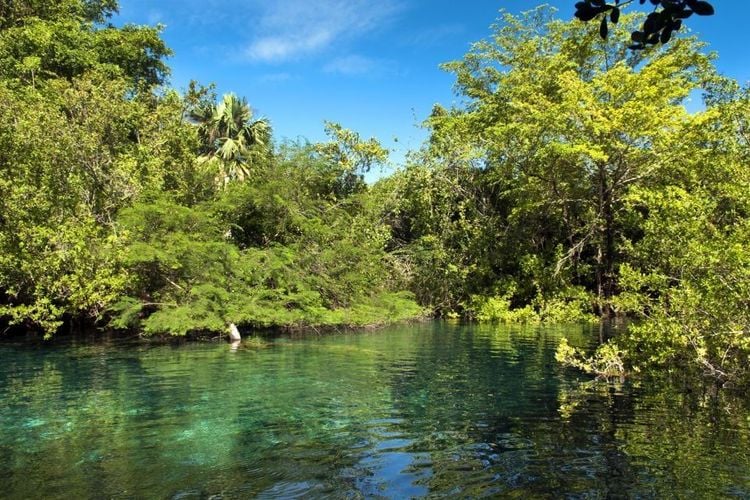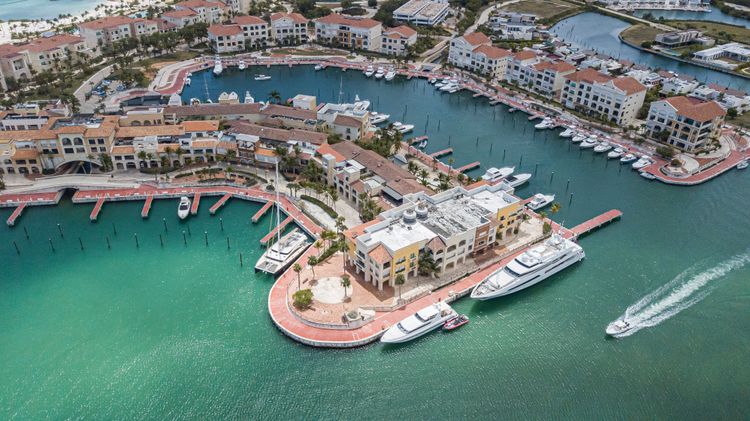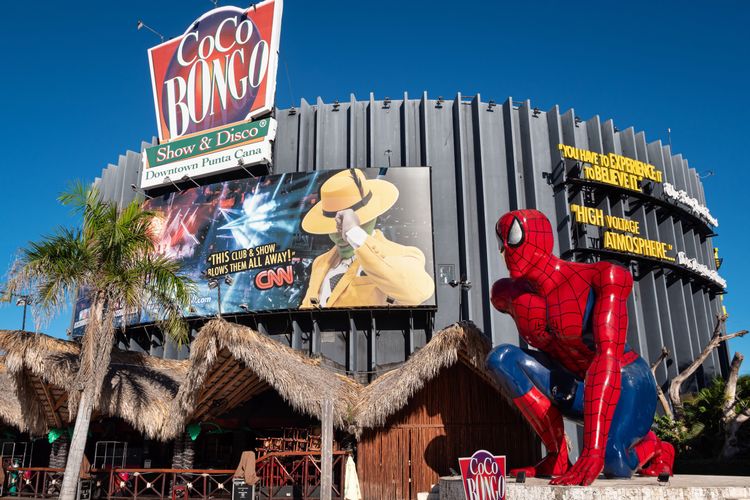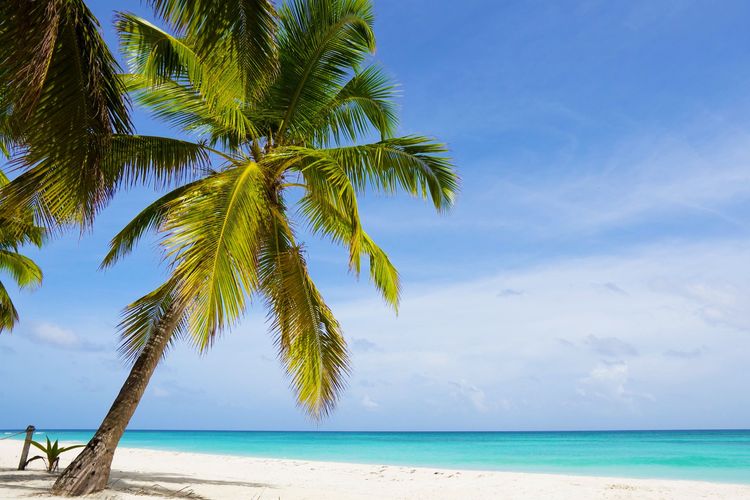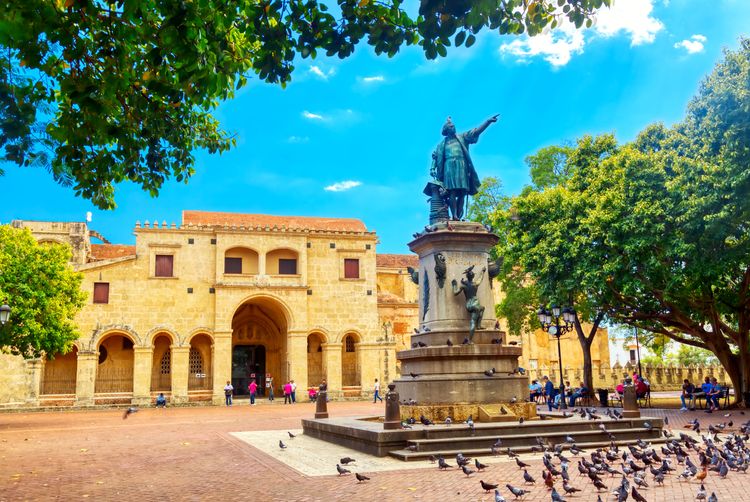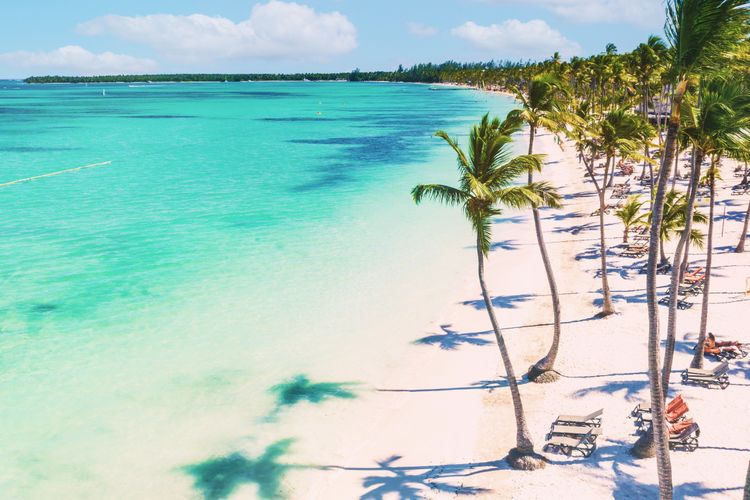Colonial splendour and Caribbean ambience in the land of merengue and bachata
Maisons colorées typiques sur l'île de Catalina.
- © Solarisys / Shutterstock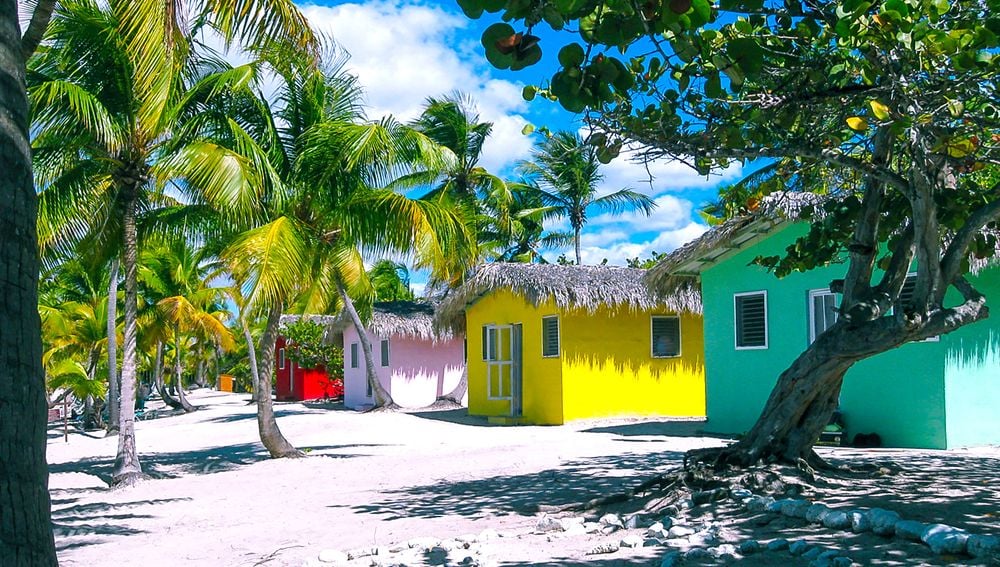
The Dominican Republic is unbeatable value for money for a faraway country. No wonder it regularly tops the list of the most visited long-haul destinations! A journey that takes you to the heart of the Spanish Caribbean. Occupying the eastern two-thirds of the island of Hispaniola, which it shares with Haiti, the Dominican Republic is rightly renowned for its heavenly beaches and top-of-the-range all-inclusive resorts, particularly in Punta Cana. But it would be a pity to be content with just that. The infectious joie de vivre of its inhabitants, its verdant landscapes, its UNESCO-listed colonial capital, the spectacle of its whales, not to mention merengue, bachata, rum and cigars - there are plenty of reasons to make a trip to the Dominican Republic!
An ecotourism paradise, from the lowest point to the highest peak in the Caribbean!
The Dominican Republic is a dream destination brimming with natural wonders in its 17 national parks, while 25% of the country is in protected ecological zones. From the Enriquillo salt lake (the lowest point in the Caribbean at 44 m below sea level) to Pico Duarte, the highest point in the Caribbean at 3175 m, the Dominican Republic is a real paradise for ecotourism, with its lagoons, tropical forests, waterfalls, caves and mangroves, not forgetting the whales that cruise the Samana region from January to March.
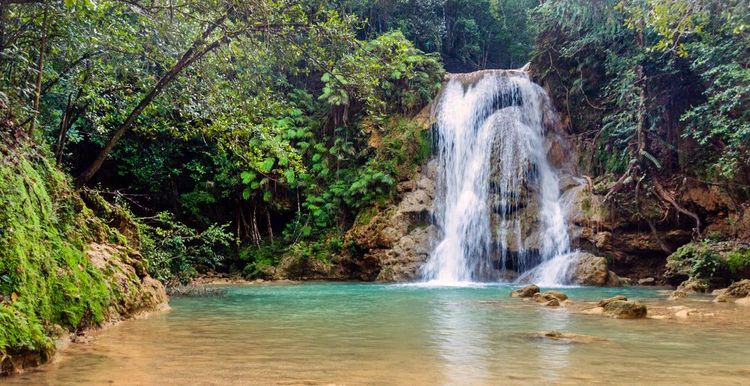
Cascade El Limon dans la péninsule de Samana.
- © Matyas Rehak / ShutterstockUNESCO-listed colonial remains
In the heart of the Greater Antilles, the island of Hispaniola, which means Little Spain, was given its name by Christopher Columbus, who landed there in 1492. Its capital, Santo Domingo, was the first city in the New World, and its superb colonial zone is a UNESCO World Heritage Site. The historic centre boasts more than 300 monuments, most of them five hundred years old: cathedrals, churches, monasteries, palaces, fortresses, etc.
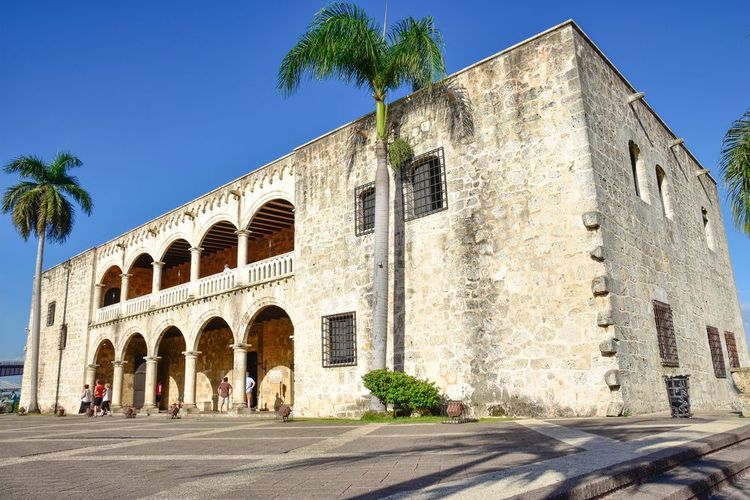
Alcazar de Colon dans la zone coloniale de Saint-Domingue
- © GiuseppeCrimeni / ShutterstockDream beaches
The Dominican Republic boasts 1,550 km of coastline, including 600 km of beaches with fine, shiny, soft sand: a paradise for fans of lounging and water sports of all kinds! A coastline of great variety, shaken by the Atlantic Ocean to the north, perfect for surfing, kite surfing and windsurfing, and cradled by the Caribbean Sea to the south, home to the most beautiful diving spots. To the east, Punta Cana, the country's most famous seaside resort, links the two for dozens of kilometres, culminating in Bavaro beach. A real postcard where three colours dominate: white sand, blue sky and turquoise waters. These beaches are the pride of the Dominican people and the world-renowned reputation of the Dominican Republic, with Punta Cana as its figurehead. It's worth noting, however, that Christopher Columbus didn't see a single coconut tree when he arrived in 1492 - they were imported from Asia much later!
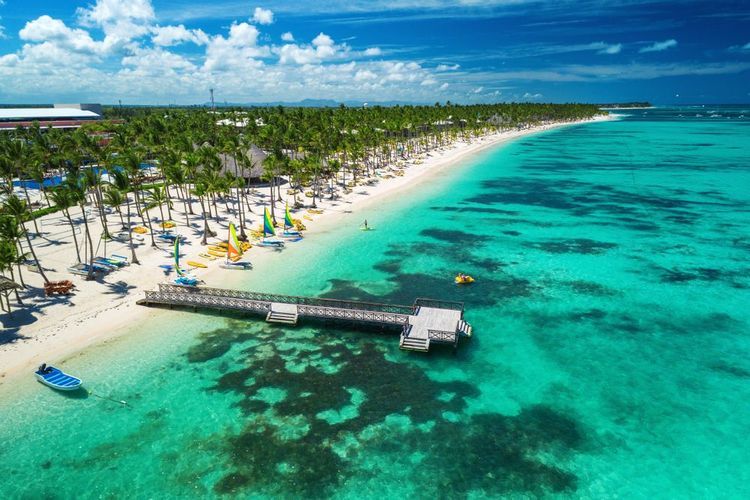
La plage de Bavaro à Punta Cana.
- © Valentin Valkov / ShutterstockThe south coast
The Caribbean coast, in the south of the island, unfurls its heavenly lagoons, from the fishing village of Bayahibe to the unspoilt peninsula of Barahona, on the border with Haiti, via La Romana, Juan Dolio and Boca Chica, a sultry little seaside resort just a few kilometres from the capital Santo Domingo, and its fabulous UNESCO-listed colonial zone. The whole region also offers the chance to combine lounging on the Caribbean beaches with some wonderful excursions, whether to the Cave of Wonders, the amazing reconstructed medieval village of Alto de Chavon, or the paradise islands of Saona and Catalina.
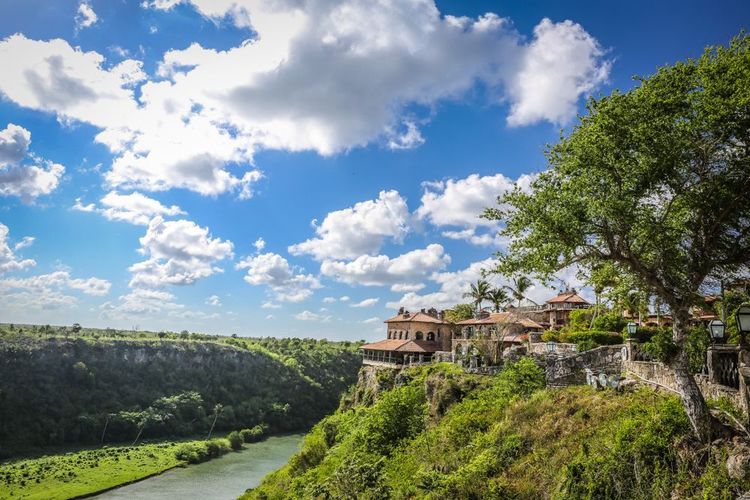
Village reconstitué d’Altos de Chavon surplombant le fleuve Chavon près de La Romana.
- © Tadan / ShutterstockThe north coast
The north coast is home to delightful, exotic beaches and charming, typically Dominican villages... An unspoilt, authentic paradise, the Samana peninsula is an invitation to travel and meet the warm, endearing Dominican people, with a host of activities to choose from: humpback whale watching, exploring Los Haitises park, swimming in the El Limon waterfall, horse riding... Sports enthusiasts will love Cabarete, a world-renowned spot for kitesurfing and windsurfing. You can even swim with dolphins at Ocean World Adventure Park in Cofresi, 10km from Puerto Plata, the historic city on the north coast, with its fort, Malecon, Amber Museum and cable car leading up to Christ the King, just like in Rio!
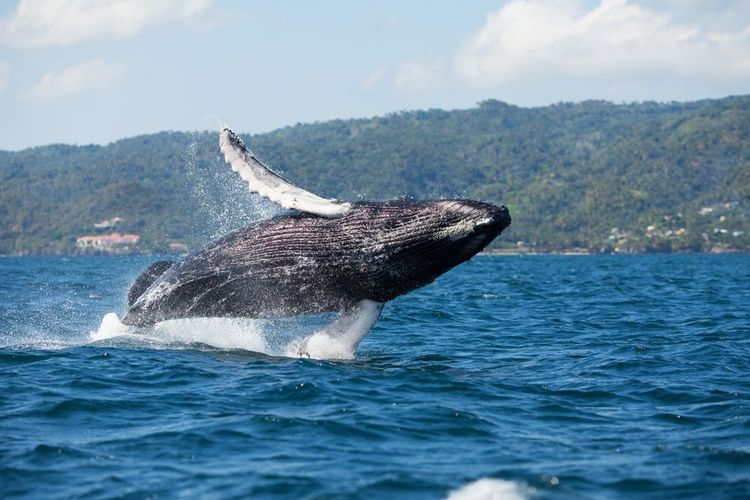
Baleine à bosse dans les eaux de la baie de Samana.
- © Jenya_TarasoF / Shutterstock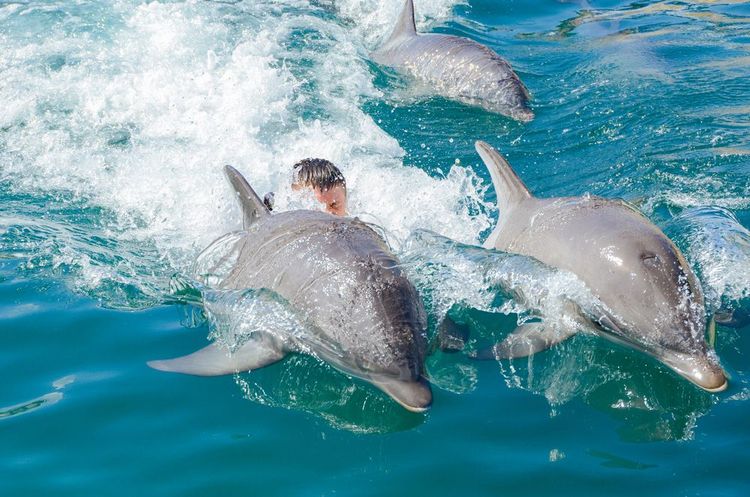
Vous pourrez nager avec des dauphins à Punta Cana et Puerto Plata.
- © DELENAC / ShutterstockCulinary specialities
Rich and spicy, Dominican cuisine is the result of Creole, European and African influences. Starchy foods, fish and shellfish, and tropical fruits are the staples. Grouper is often cooked with coconut milk or in a green sauce (coriander, parsley, garlic and olive oil). For economic reasons, however, fried chicken is the most popular dish.
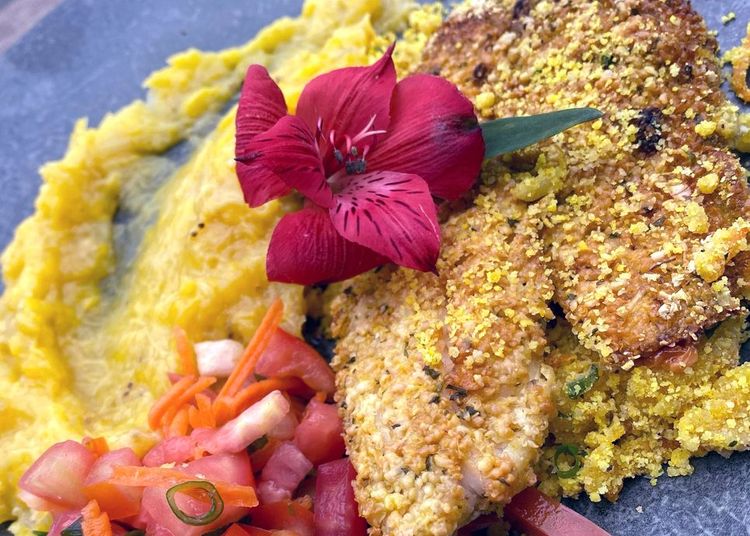
Le mangù est cette puée de bananes plantains servie ici avec du poisson pané
- © Lidiane.silvaa88 / ShutterstockLast articles
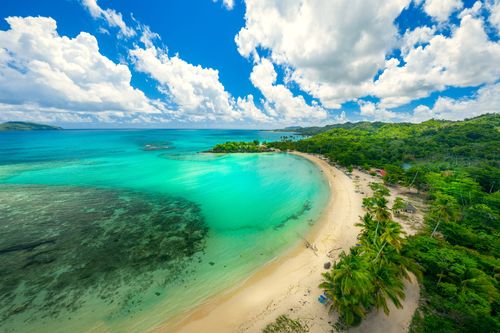
Samana: the unspoilt peninsula
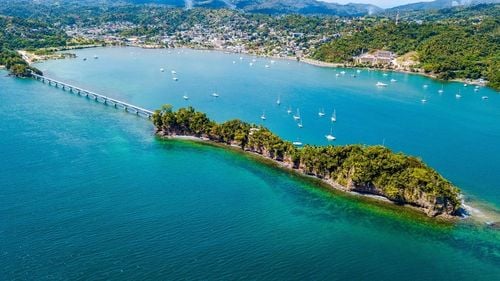
Punta Cana and the north of the Dominican Republic in 7 days
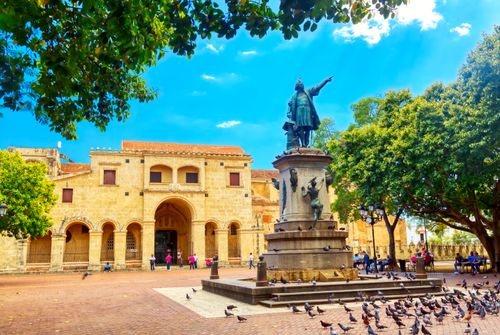
6 emblematic sites in the colonial centre of Santo Domingo

Santo Domingo and the south of the Dominican Republic in 7 days
The must-sees
How to get there?
Punta Cana airport is the busiest in the country, receiving over 65% of tourists arriving by air in the Dominican Republic. You can fly there with Air France from Roissy CDG, Air Caraïbes and French Bee from Orly, and Air Europa from Orly (via Madrid). It also serves the beaches of Cap Cana, Bayahibe and La Romana. A new motorway connects the 40 km of the Punta Cana area in 30 minutes instead of 1? hours a few years ago. Punta Cana airport is located to the south of the area, between the Cap Cana marina and the Bavaro and Cabeza de Toro lagoons.
Las Américas International Airport in Santo Domingo, the capital, is the other main point of entry into the country. It is located on a small peninsula 27 km east of the colonial zone. Allow half an hour for transfers. This airport is served by direct flights from France with Air France from Roissy CDG and Air Caraïbes from Orly. With a stopover in Spain, you can also fly via Iberia and Air Europa. It also serves the unspoilt peninsulas of Barahona and Samana, and the beaches of Boca Chica and Juan Dolio. The other main airports are La Romana, Puerto Plata and Samana, but they offer few direct flights from France.
✈️ Fly to Santo Domingo
Compare prices for flights to Santo DomingoWhere to stay?
The Punta Cana area accounts for 70% of the country's hotels! The all-inclusive formula is the most widespread in these gigantic resorts, which are generally top-of-the-range. This is the realm of families, with superbly well-equipped children's clubs, and some resorts even boast a water park. There are, however, several resorts reserved for adults. On the other hand, the Dominican Republic is not really a spa destination; it's mainly about wellness areas with the bare minimum, not necessarily a sauna and hammam.
The colonial area of Santo Domingo is home to many charming accommodations, often set in historic monuments. In the other seaside towns, whether Samana, Cabarete and Sosua in the north or Juan Dolio, Boca Chica and Barahona in the south, there are no giant resorts like in Punta Cana, Bayahibe and Puerto Plata, but rather friendly clubs on a human scale.
Practical information
🛩️ Allow 9 hours' flying time to Punta Cana and Santo Domingo airports. Beware of the time difference! 5 hours less in winter and 6 hours less in summer! The airports are located all over the country: Punta Cana, La Romana, Santo Domingo, Puerto Plata and Samana. Some tour operators charter flights as and when they fill up, so you don't necessarily know where you'll be landing, which can mean transfer times of 3 or 4 hours, especially if you're in the Puerto Plata or Samana region, which are less well served than Punta Cana and Santo Domingo.
🛂 Entry requirements
The good news about Covid-19 is that you don't have to do a thing! Since 23 April 2022, travellers no longer need to present a COVID-19 vaccination card, PCR or antigen test to enter the Dominican Republic. Instead, they will need to fill in a form generating a QR code for entering and leaving Dominican territory. This form, which can be accessed via the following link https://eticket.migracion.gob.do/?utm_source=easyvoyage, combines the traveller's health declaration, customs declaration and international embarkation/disembarkation forms. You will need to pay a tourist card of USD 10. No vaccinations are required to enter the Dominican Republic. Please note that the days when an identity card was all you needed are long gone. You will need to present your passport, which must be valid for at least the duration of your stay. No visa is required.
🥧 Culinary specialities?
Bandera is a traditional dish of white rice, beans and kidney beans, stewed meat (beef or chicken), accompanied by salad and fried plantains (platanos frotos). Another speciality is mofongo de camarone (mashed banana with prawns) with sweet potatoes. For breakfast, the must-try dish is mangù, fried plantain purée with onions and cheese. You're sure to fall for the mango, orange, banana, passion fruit or guava jams.
🥤 What should we drink?
Rum remains the most popular spirit, served neat (the oldest) or in cocktails. Three brands, the 3 Bs, share the market: Brugal (the best known), Barcelo (the most popular) and Bermudez (rarer). There are two brands of beer in the Dominican Republic: Brahma and Présidente (the best!). Don't hesitate to try Mamajuana, the local arranged rum, made from rum, honey and wine!
⏱ When to go?
The dry season, from November to April, corresponds to the high season: there are more people and prices are higher. During the wet season, from May to October, heavy rains are frequent, but they are brief and usually at the end of the day, so it's not really a problem. The cyclone season runs from June to November. In the low season, from mid-April to mid-December, you can take advantage of low hotel rates. Air fares are also lower and there are fewer tourists on the beaches.
👜 What should you bring back?
Amber (solidified brown resin) and larimar (a bluish stone endemic to the island) jewellery, leather goods, basketry, merengue and bachata CDs, liquid vanilla, jam, Brugal rum, Mamajuana (a local blended rum made from rum, honey and wine) and coffee.
🎨 Art
Colourful naive art paintings, a heritage of the Taino Indians, represent an art of living in the Dominican Republic. These brightly coloured paintings can be found just about everywhere and are a nice souvenir to bring back. And don't forget that the Dominican Republic is the world's leading producer and exporter of cigars!
In March and April, many young Americans come to Dominican Republic resorts to celebrate the end of their studies. These are the famous Spring Breakers, and the atmosphere will not be the most tranquil!
Beware of the heat shock between the 30°C outside temperatures and the 15°C air-conditioned rooms, bars and restaurants.
You'll certainly have the chance to try lobster. If you see lobster on a menu, beware, it's a lobster, but the Quebecois, of whom there are many in the Dominican Republic, say lobster when they mean crayfish! Be aware that you're not allowed to eat lobster in the Dominican Republic from 1 March to 3 June, as this is when they reproduce. If you eat lobster during this period, you'll be eating frozen lobster! That said, just between you and me, avoid the $45 lobster menus in hotels. You'll find them for between 10 and 15 dollars in the bouibouis in the surrounding villages (you can negotiate). What's more, they're fresh (some are frozen in hotels). You can even call the day before and order them.
An upsurge in drug cases in the Dominican Republic has prompted the French Ministry of Foreign Affairs to publish a warning for travellers on its website. When departing from the Dominican Republic, travellers are strongly advised to check the contents of their luggage before checking in at the airport, as prohibited substances may be placed in it without their knowledge, particularly if the luggage has been left unattended.
Be extremely careful on the roads! Between potholes, crazy drivers without indicators or rear-view mirrors, animals (chickens and dogs), huge speed bumps, non-existent road signs and lack of lighting at night, accidents are very common and often serious. That said, the road network has been greatly improved in recent years, enabling journey times to be significantly reduced.
explore Try out our comparators
It is Easy to travel
Linked destinations




